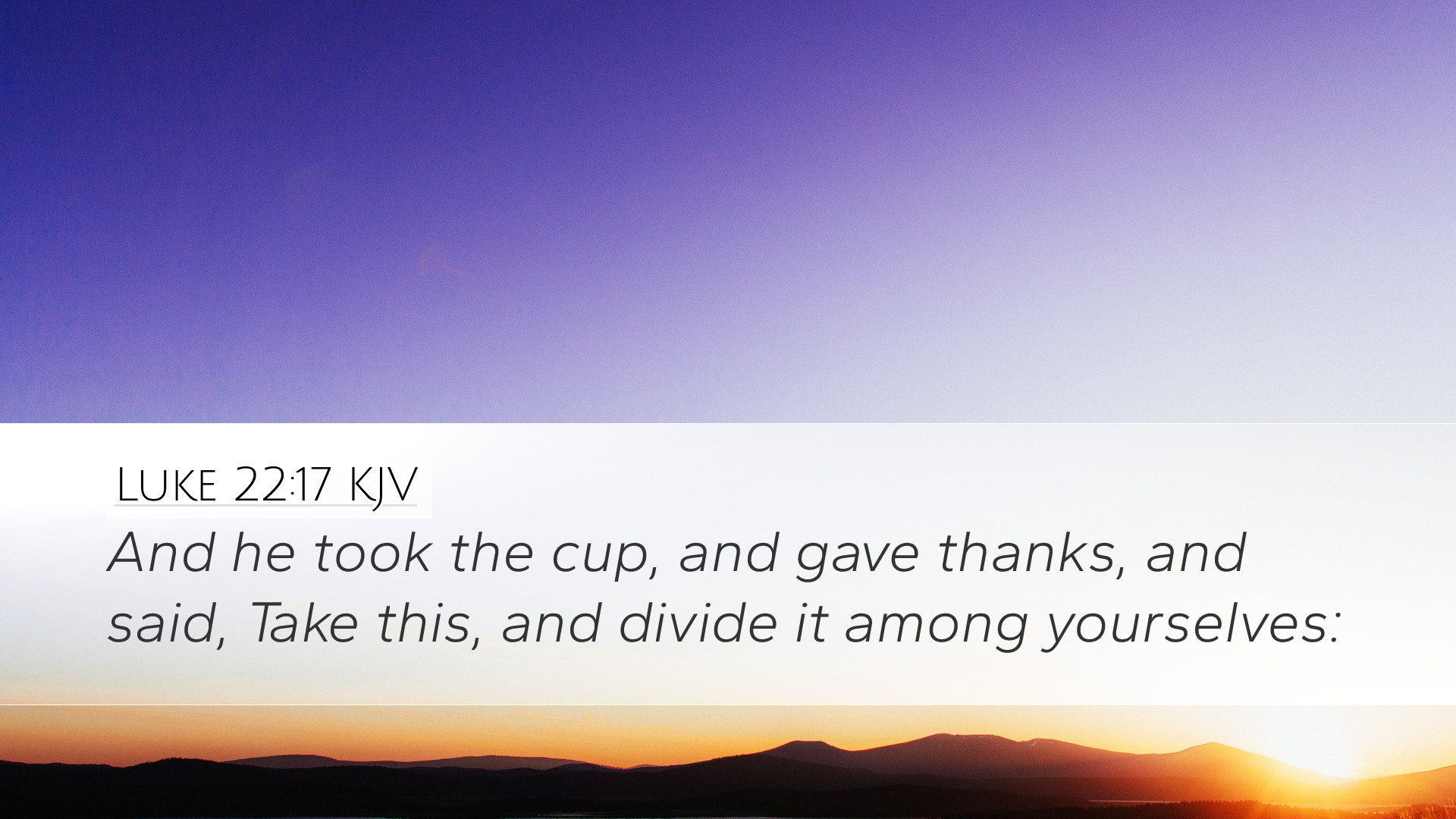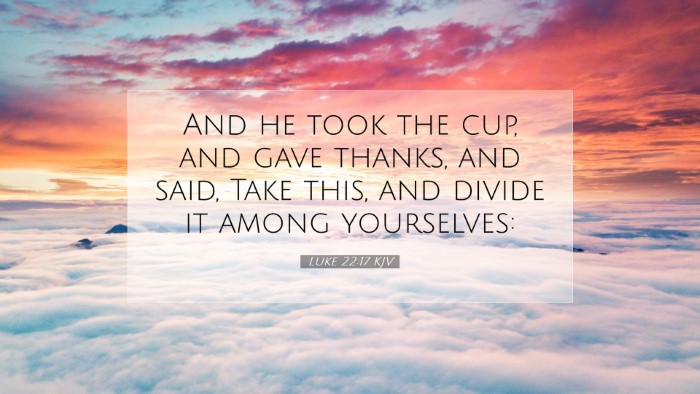Bible Commentary on Luke 22:17
This discourse focuses on Luke 22:17, an important verse in the context of the Last Supper, which serves as a prelude to the institution of the Eucharist. Here, Jesus takes a cup of wine, a pivotal act that signifies both thanksgiving and the foreshadowing of His suffering.
Text of Luke 22:17
"And he took the cup, and gave thanks, and said, Take this, and divide it among yourselves."
Historical Context
According to the Synoptic Gospels, this event occurs during the Passover meal. Jesus’ selection of this moment to institute a new covenant is significant.
- Passover Significance: The Passover commemorates God's deliverance of Israel from Egyptian bondage, and Jesus reinterprets this deliverance in light of His impending crucifixion.
- Covenantal Transition: The cup represents the new covenant in His blood, a shift from the old covenant represented by the sacrificial system.
Exegetical Insights
Scholars have noted several themes in this verse that contribute to its theological richness:
- Act of Thanksgiving: The act of giving thanks (εὐχαριστήσας) reflects Jesus’ humility and the acknowledgment of God's grace.
- Communal Aspect: Jesus instructs His disciples to share the cup, emphasizing the community aspect of His forthcoming sacrifice.
- Divine Sovereignty: The choice of words reveals that Jesus is in control of the narrative; He willingly embraces the authority given to Him to initiate the new covenant.
Theological Implications
This moment encapsulates the essence of the Christian faith regarding salvation and the role of Jesus as the mediator of the new covenant.
- New Covenant Theology: The establishment of a new covenant signifies a relationship rooted in grace, contrasting with the law represented by prior covenants.
- Redemptive Purpose: Jesus' reference to His blood underlines the sacrificial nature of His mission, foreshadowing the crucifixion as an atoning sacrifice for humanity's sins.
- Unity of Believers: The communal aspect of sharing the cup symbolizes the unity of believers, called to partake in the body and blood of Christ.
Commentary Insights
Matthew Henry's Perspective
Henry highlights the act of giving thanks as an example of Jesus’ model for humanity, indicating gratitude even in the face of imminent suffering. He emphasizes the importance of this gratitude being mirrored in the believer's life.
Albert Barnes’ Views
Barnes elaborates on the significance of the cup as a representation of Jesus' blood and the new covenant's promises. He notes the relational aspect inherent in Christ’s directive to His disciples, which reflects the community of faith.
Adam Clarke's Contribution
Clarke provides a detailed examination of the linguistic elements in this passage, explaining the implications of dividing the cup among the disciples. He emphasizes the importance of communal participation in the Christian faith and the necessity of sharing in the sufferings and glories of Christ.
Reflections for Pastors and Theologians
For pastors and theologians, Luke 22:17 serves as a profound reminder of the nature of Christ's ministry and the call for communal fellowship in the body of Christ. Reflecting on this passage can yield insights into:
- The Role of Sacraments: Understanding the Eucharist as a covenantal meal that binds believers together in faith.
- Jesus as the Fulfillment: Recognizing Jesus as the culmination of the Law and Prophets, fulfilling the covenantal promises of the Old Testament.
- Encouraging Unity: Teaching congregations about the importance of unity and shared responsibility in the Christian journey.
Conclusion
Luke 22:17 is not merely a historical record but a theological statement rich with meaning. It challenges believers to embrace a lifestyle of gratitude, fosters understanding of the new covenant, and promotes a shared faith experience among disciples of Christ. As one reflects on this passage, the implications for contemporary faith practice become profoundly clear.


